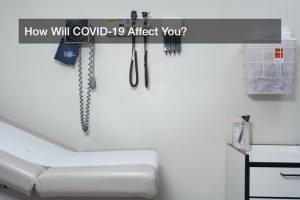Studies Show One Third of Americans Do Not Receive Adequate Dental Care


When you want to know how to do your own teeth cleaning, it’s best to ask a dentist or dental hygienist about it. They will know the best ways for cleaning the teeth and gums so that you have as few cavities as possible. When you see your dentist for general dentistry procedures, you can ask how to clean tooth decay and how to get better oral hygiene. Your dentist will know all of the best tools that are available commercially for cleaning the teeth. Once you know how to get your teeth clean, you can enjoy better dental health.
When you talk to your dentist, talk about your current oral care routine. There may be things that you need to add to it for your teeth to be as healthy as possible. You might not be flossing enough, or you may be doing so incorrectly. You might need a tongue scraper or some other tooth to keep your mouth healthier. Once you know how to keep your teeth clean, you might just experience fewer visits to the dentist to have dental procedures done. This can save you a lot of money as well as the hassle of visiting the dentist again and again.
 Dentists recommend brushing twice a day, flossing daily, and visiting the dentist at least twice a year for cleaning to prevent tooth decay, tooth loss, and periodontal disease. While these sounds like simple requests, a growing number of Americans are forgetting, or ignoring, the third step in preventative dentistry; a new study conducted by Gallup indicates that one third of American adults did not see a dentist within the last year.
Dentists recommend brushing twice a day, flossing daily, and visiting the dentist at least twice a year for cleaning to prevent tooth decay, tooth loss, and periodontal disease. While these sounds like simple requests, a growing number of Americans are forgetting, or ignoring, the third step in preventative dentistry; a new study conducted by Gallup indicates that one third of American adults did not see a dentist within the last year.
The survey reveals that the number of American adults who did visit a dentist this year was the same as in 2008, indicating that this trend has been a part of the country’s dental habits in recent years. The research showed a connection between economic and social factors that could have contributed to the low number of dental visits, with only 40% of lower income families reporting a visit to the dentist compared to 60% of higher income families that said they had seen their dentist in the past year.
This disparity could, in part, be due to the rising cost of dental insurance. The Health Resources and Services Administration reports that about $64 billion is spent annually in the U.S., with only $4 billion subsidized by the government. This means that of the HRSA projected 108 million Americans without dental insurance, a large percentage of people are paying for dental services out-of-pocket. While a simple filling could cost as little as $100, it could easily become a $1000 root canal if left untreated, according to The New York Times. The publication also warns readers that skipping a routine $80 dental cleaning could eventually lead to thousands of dollars worth of periodontal disease treatment.
Dental cavities and diseases could also impact a patient’s overall health. Studies show that patients who have poor oral hygiene could be at risk for heart problems, such as stroke. Some studies show that the hardening and build up of plaque can cause inflammation in the arteries.

There is also an increasing concern that children are not receiving adequate dental services. Dentists often recommend that infants should visit a dentist soon after their first tooth emerges, and that cavities can form in children as young as nine months old. Beneficial dental habits should begin at a young age in order to keep teeth healthy in adulthood, according to one dentist.

One solution to the lackadaisical interest in dentistry could lie in more visibility, because there may not be sufficient awareness about the importance of regular dental check-ups. One representative from Clinical Optimization, a company that specializes in search engine optimization for dentists and other health care professionals, explained that more information about the links between dental health and heart health should be promoted more overtly on the internet and other media outlets.

There are other solutions as well. Some websites also offer discounts on dental care, and several organizations around the U.S. hold free dental day-clinics periodically to help patients who may not be able to afford proper dental care. These clinics are usually lined with adults and children who are in need of simple and more complicated dental procedures. Many dental practices also work out payment plans with patients who do not have dental insurance.
But the cost of dental care could determine whether all American adults will eventually seek the cleanings they need on a regular basis. With such a hefty price tag, dental care may continue to be a desire for low income families, instead of a reality.







